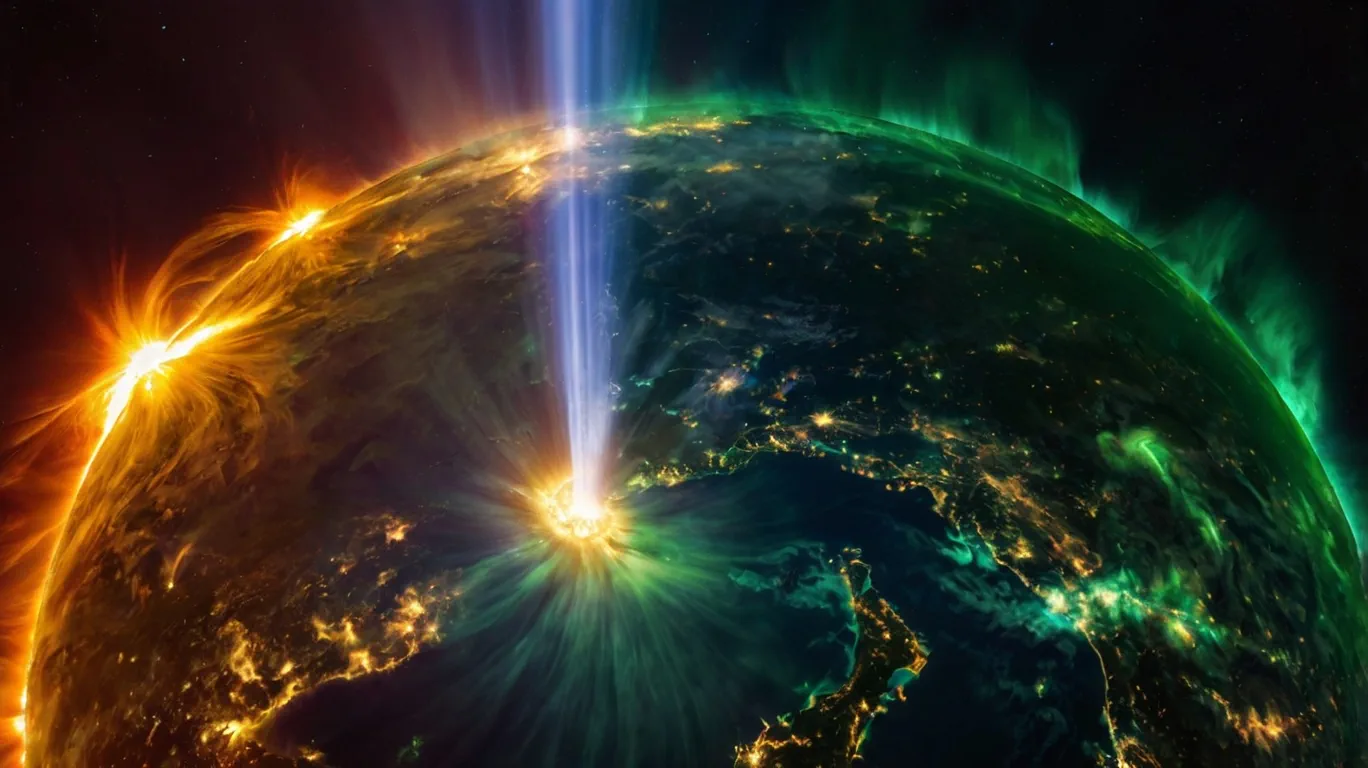
Magnetic storm forecast for August 2024
This forecast is based on data available at the time of writing and may be adjusted as new data is received from space observatories.
Situation at the end of July: a powerful solar flare and a G3 storm
A powerful X-class flare occurred on the Sun at the end of July 2024, which caused a G3 geomagnetic storm. Such storms can have a significant impact on the operation of satellites, power systems and cause polar lights in unusual latitudes.
Magnetic storm forecast for August 2024
There is a possibility of powerful magnetic storms recurring in August. The Sun is in the active phase of its cycle, and such events can occur periodically.
However, an accurate forecast of magnetic storms for several weeks ahead is difficult due to the complexity of the processes occurring on the Sun.
The main factors influencing the forecast of geomagnetic activity:
- Sunspot activity: The larger and more active the sunspots, the higher the probability of flares and magnetic storms.
- Coronal mass ejections: These plasma ejections from the Sun are the main cause of geomagnetic storms.
- Solar wind speed: An increase in the solar wind speed can increase the impact of coronal mass ejections on the Earth's magnetosphere.
Preliminary data indicate the following periods of increased solar activity in August:
| Period | Expected activity |
| First ten days of August | Weak and moderate magnetic storms associated with the residual impact of the late July flare. |
| Second ten-day period of August | Increased solar activity is expected, moderate and strong magnetic storms are possible. |
| Third ten-day period of August | The forecast is less certain. The probability of strong magnetic storms remains. |
Export to Tables
Table: Geomagnetic Storm Intensity Scale
| Class | Description | Possible Consequences |
| G1 | Weak | Minor fluctuations in power systems; weak auroras at high latitudes. |
| G2 | Moderate | Minor disruptions to power systems; auroras visible at mid-latitudes. |
| G3 | Severe | Power outages possible, especially at high latitudes; bright auroras visible at low latitudes. |
| G4 | Very Strong | Extended power outages; satellite navigation may be disrupted; auroras visible at latitudes of major cities. |
| G5 | Extreme | Widespread power outages; satellite communications and navigation severely disrupted; auroras are visible at the equator. |
Advice during magnetic storms
- Follow the forecasts: Check the space weather information regularly.
- Limit the time spent outdoors: Especially during periods of peak solar activity.
- Follow the daily routine: Try to go to bed and wake up at the same time.
- Avoid stress: Stress can increase the negative impact of magnetic storms on the body.
- Monitor your blood pressure: People with hypertension and hypotension should be especially careful about their health.
- Consult your doctor: If you feel unwell, consult your doctor.
It is important to understand that each person's reaction to magnetic storms are individual. Some people may not feel their influence at all, while others may experience headaches, weakness, insomnia and other unpleasant symptoms.